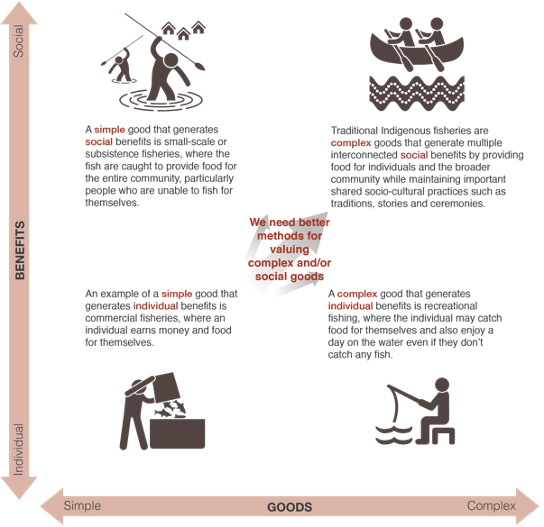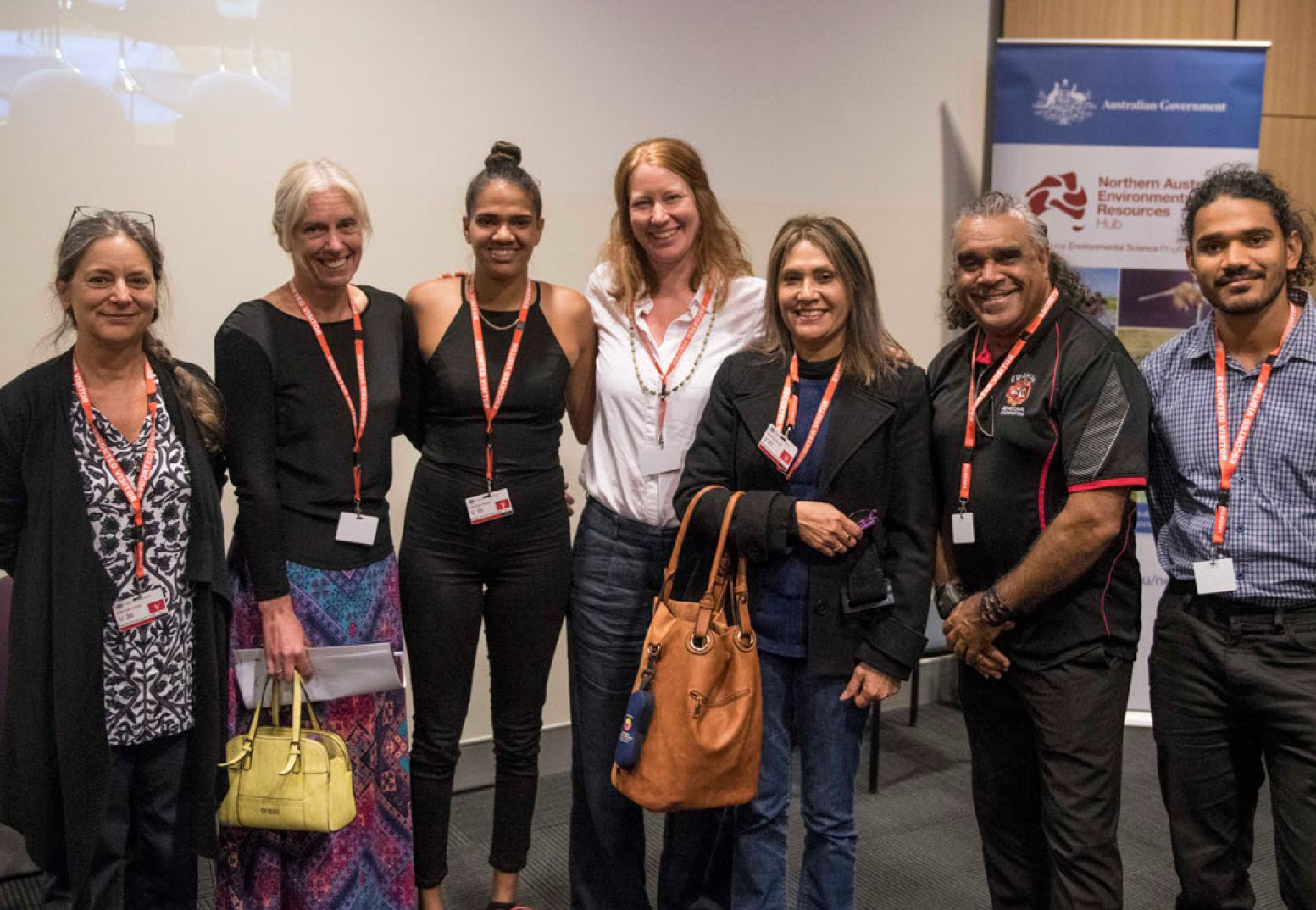We benefit from investments in the environment in numerous and varied ways. Some of these benefits are tangible and fairly straightforward to value, but this research demonstrates the need for better methods to measure the more complex, less tangible benefits of an investment and those benefits that accrue to society as a whole.
The project shows that valuation tools developed by economists over the last 100 years are differentially suited to particular types of goods and services – the most common tools are adept at quantifying the benefits of simple individual goods, and progress has been made towards valuing complex individual goods and simple social goods, but tools to estimate the benefits to society of more complex and/or social goods, like those provided by Indigenous Protected Areas (IPAs) and Indigenous Land and Sea Management Programs (ILSMPs), are less well developed (Figure 1). The research also highlighted the consequent danger that the investments prioritised by current valuation tools might be those with the most quantifiable benefits rather than those with the most benefits.

Figure 1. Goods can be seen as simple or complex and as providing benefits to individuals or society as a whole. We need better methods for valuing complex and/or social goods.
These findings were presented to staff at the Department of Climate Change, Energy, the Environment and Water and Prime Minister & Cabinet (PMC), increasing awareness and understanding among policy makers and program mangers about the gaps in quantified estimates of many of the benefits associated with IPAs. This led to government interest in further research to assess benefits of ILSMPs across Northern Australia.
A new Hub project was therefore developed to generate and analyse empirical data to inform policy and program decisions, including the important ‘Closing the Gap’ initiative. This follow-on work is using a variety of methods to rigorously compare and where possible quantify the benefits generated by ILSMPs in order to address questions such as: Do ILSMPS improve quality of life for Indigenous people? Promote northern development and close the (income) gap? Provide pathways to Indigenous economic independence? Help Indigenous communities meet their wider aspirations?

Natalie Stoeckl, Diane Jarvis, Celia Boxer, Jane Addison, Sharon Prior, David Hudson and Emile Boxer at the Department of Climate Change, Energy, the Environment and Water in Canberra during Reconciliation Week. Photo by NESP Northern Hub.
The project also laid the foundations for a journal article which analysed the problems of non-market valuation and made recommendations for the way forward (see Stoeckl, N., Hicks, C., Farr, M., Grainger, D., Esparon, M., and Larson, S. (2018), “The crowding out of complex social goods”, Ecological Economics, 144: 65-72. This article was immediately picked up by the World Forum on Natural Capital as a ‘call to arms’ for researchers to help develop appropriate methods of valuing complex goods and services that benefit societies (see
https://naturalcapitalforum.com/news/article/the-crowding-out-of-complex-social-goods/).
The current use of valuations focused on individuals erodes sustainable development and conservation efforts by crowding out the institutions and investments that support socially important values, that protect the environment, and that enhance individual and community wellbeing. New valuation methods that encompass benefits for society could turn this around and revolutionise approaches to ecosystem service valuations and the way cost-benefit analyses are undertaken globally. The journal article was also used by PMC to inform the development of a shared outcomes framework for IPA and ranger programs nationally.
Project results have been shared through a factsheet, report and presentations. Internationally, in addition to being promoted through the Natural Capital blog post, they were included in a presentation to the International Society for Ecological Economics’ 2016 conference in Washington DC with good feedback and requests for more detailed information.
Interest in the work and current project continues to grow with presentations planned in Canberra in May 2018 and researchers invited to present at the Regional IPA & Economic Development Conference in Cairns in June 2018.
Research outputs
Journal articles
Factsheets
Reports
Project webpage
Attributions